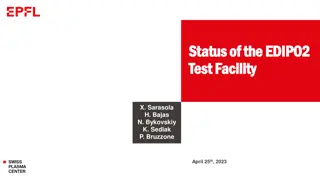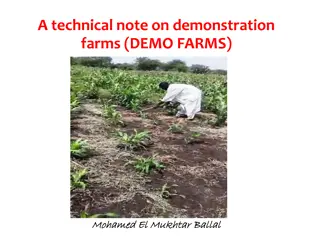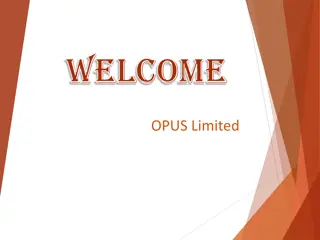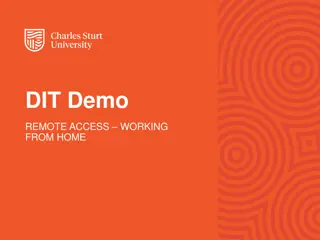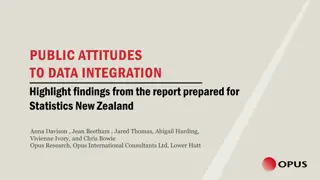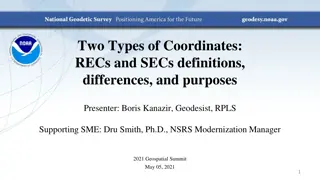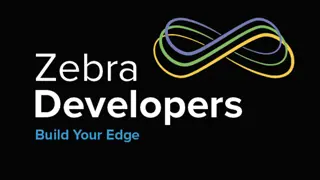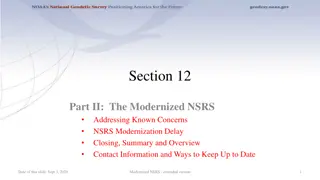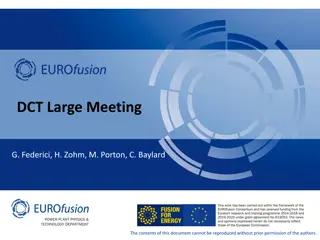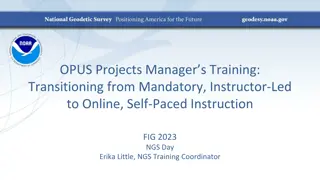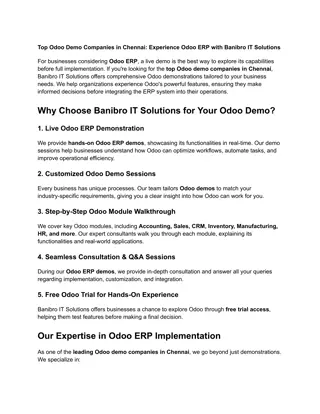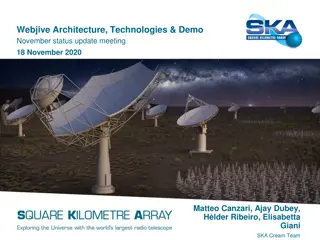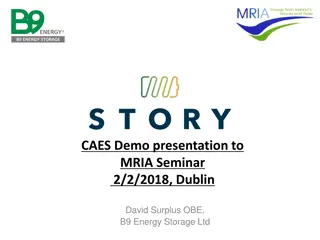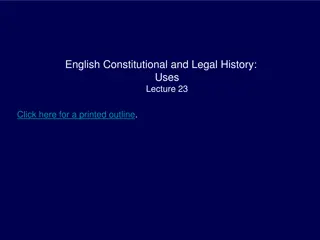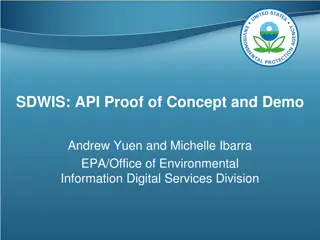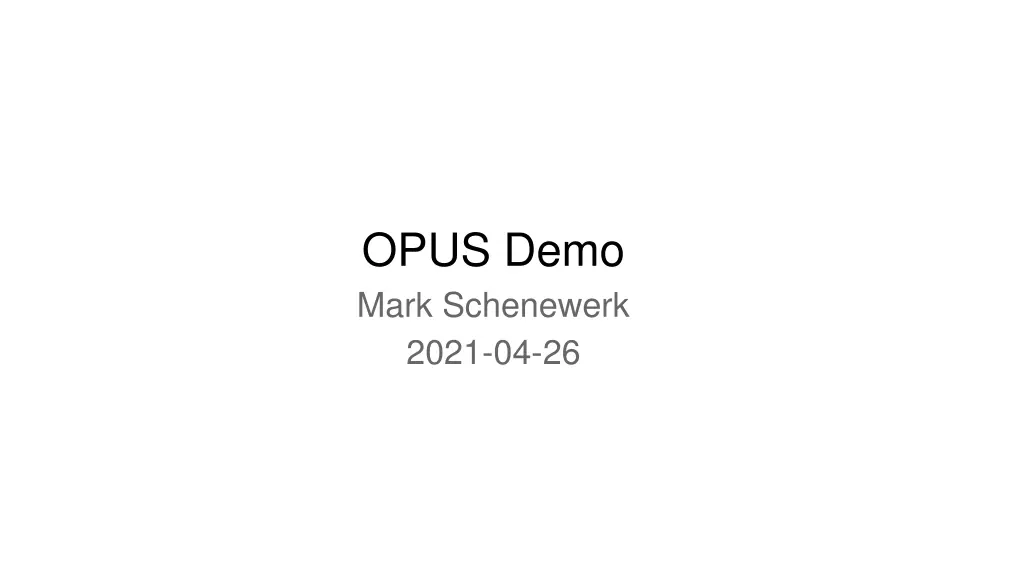
GNSS Positioning Error Budget and Differential Processing
Explore the error budget in GNSS satellite-ground receiver measurements, aiming for sub-centimeter accuracy at 95% confidence. Learn how differential processing enhances accuracy through baseline measurements. Discover the infrastructure requirements for successful differential GNSS processing.
Download Presentation

Please find below an Image/Link to download the presentation.
The content on the website is provided AS IS for your information and personal use only. It may not be sold, licensed, or shared on other websites without obtaining consent from the author. If you encounter any issues during the download, it is possible that the publisher has removed the file from their server.
You are allowed to download the files provided on this website for personal or commercial use, subject to the condition that they are used lawfully. All files are the property of their respective owners.
The content on the website is provided AS IS for your information and personal use only. It may not be sold, licensed, or shared on other websites without obtaining consent from the author.
E N D
Presentation Transcript
OPUS Demo Mark Schenewerk 2021-04-26
OPUS Problem Definition Estimate the instantaneous position of a point on the Earth using GNSS: with sub-centimeter accuracy at 95% confidence. with ~100% reliability. using as little data as possible.
GNSS Positioning Error Budget In the broadest strokes, the error budget for a satellite - ground receiver measurement is: Pseudorange: 1 cm level, but phase can be measured 1 cm level. Satellites: IGS claims positional accuracy at the ~2.5 cm level (https://www.igs.org/products/). Modeled and unmodeled effects: generally at the ~1 cm. Charged and neutral atmosphere: 1 cm*. Regional/local geophysical effects like tectonic motion, subsidence, loading: 1 cm*. Antenna model: <1 cm*. Multipath and other E/M noise: 1 cm*. Data quality control: <1 cm*. *Your results might vary. Uh-oh! You cannot produce a sub-centimeter measurement from a tool whose intrinsic accuracy is >1 cm without repeated measurements over time.
Differential Positioning However, by collecting observations from two (or more) ground receivers simultaneously and differencing them, we can achieve a relative accuracy better than the absolute accuracy of point positioning. In other words, with GNSS, we can estimate the position of an unknown mark relative to a known, reference mark better than we can estimate the position of either mark relative to the constellation of orbiting satellites. This is because differential processing is more forgiving of our technology errors common to the unknown and known marks difference away and experience has shown that we can achieve sub- centimeter relative accuracies in many, but not all, circumstances. This isn t to say that error mitigation and model accuracy isn t important, but some of the more pesky errors are largely eliminated with differential processing.
A Pleasant Bonus NGS refers to measuring vectors (A.K.A. baselines), i.e. the coordinate vector differences from one mark to another (left). Differential GNSS measurements between two marks produces a baseline measurement (right) making the differential GNSS technique palatable to NGS - surveying has always used differential measurements. S B-A B-A = S-A - S-B B B A A
There Aint No Such Thing As A Free Lunch. While we still need the general infrastructure for GNSS processing, we need more infrastructure for differential GNSS processing: We need a suitably distributed collection of passive (they just sit there: brass disks, rods, chisel marks in stone) or active (actively collecting GNSS data and regularly monitored) reference marks whose positions are known to 1 cm throughout the lifetime of their existence. We need software capable of differential GNSS processing. Moreover, these should be easy to use (no or limited training) and easy to access (online) to help ensure that our stakeholders will want to use them.
Thus, The Justification For The NOAA CORS Network And OPUS NOAA CORS Network = NCN: Active marks. 75 km spacing. ~0.2 cm median positional accuracy if the station has been in continuous operation for more than 3 yrs without a geophysical or maintenance event. (Multi-year CORS Solution 2 = MYCS2) Online Positioning User Service = OPUS: Differential positioning to the NCN using geodetic-quality software and models requiring virtually no input from or training needed for our stakeholders.
Reality Check: Sub-centimeter Accuracy At 95% Confidence OPUS results are usually poorer than 1 cm because of less than optimal circumstances: The conditions surveyors must face in the field: obstructions / multipath / interference. Imperfect models for local effects: tropo / subsidence / loading. NCN coordinate maintenance goals are only 2 cm horizontally or 4 cm vertically. (https://www.ngs.noaa.gov/CORS/Articles/Reference-Systems-Part-2.pdf) Gillins, D.T., Kerr, D., and Weaver, B. (2019) OPUS approaches 1 cm accuracy, but only for longer data spans.
Reality Check: Sub-centimeter Accuracy At Near 100% Reliability NCN Median data reliability for the NCN is 100%; the average is 96.4%. Full GNSS capability is limited, but improving. OPUS OPUS-S has a 95% success rate simply by requiring longer data spans. (Based on OPUS logs GPS weeks 2149 - 2152: 2021-03-14 - 2021-04-10.) OPUS-RS has a 78% success rate. (Based on OPUS logs for GPS weeks 2149 - 2152: 2021-03-14 - 2021-04-10.) OPUS processing is dependent upon OPUS itself, NCN and the IGS, but the OPUS report has many hardware and resource dependencies: HTDP, NCAT, GEOID(s), the IDB and OPUS databases, and its own project archive. All have to be online for success. But the bottom line is that OPUS, excluding OPUS-RS, exceeds 90% reliability.
Reality Check: Sub-centimeter Accuracy Using As Little Data As Possible When OPUS was released in 2000, requiring a minimum of 2 hrs of data was considered more than adequate. But by the release of OPUS-RS in 2007, reducing the minimum data span to 15 min, was considered a major - and necessary - improvement. Now, even 15 min of data is considered a burden. RTK is increasingly common and can provide cm-level accuracies in seconds. But the reputation of NGS and any RTK network s spatial limits plus the common use of a subscription business model keeps OPUS meaningful. OPUS lags behind stakeholder hopes/expectations for data duration. Note: NGS will always be one of the biggest users of OPUS, so bear in mind that NGS needs aren t necessarily those of our stakeholders. NGS is willing to sacrifice time for accuracy, i.e. longer, repeated occupations of a mark.
Reality Check: Overall Summary OPUS remains meaningful, but increasingly struggles to meet expectations.
Conceptual Schematic of OPUS Other Action Processing Thread 1 Processing Thread 2 Processing Thread 1 Processing Thread 1 Processing Thread N-1 Processing Thread N Queue Web Form Email To User A specifically designated directory, the queue in OPUS jargon, acts as a repository for transient data files and instructions enabling the outward-facing servers (red) to communicate to the inward-facing servers (green) asynchronously. Both outward- and inward-facing servers can exist without the other. Both outward- and inward-facing servers quality control and throttle uploads.
Code Summaries (1 / 2) OPUS-S ~20,000 lines of Perl. Essential, but negligible lines of other languages in this context. PAGES suite*. OPUS-RS ~20,000 lines of Perl. Essential, but negligible lines of other languages in this context. RSGPS suite**. OPUS-Net ~20,000 lines of Perl. Essential, but negligible lines of other languages in this context. PAGES suite*. *Soon, no one in NGS will have meaningful experience with this software. **No one in NGS has meaningful experience with this software.
Code Summaries (2 / 2) OPUS-Sharing I don t know much about OPUS-Sharing. OPUS-Projects 4.0. 6,000 lines of HTML 3,000 lines of CSS 23,000 lines of working Javascript + some third-party code. 136,000 lines of working Perl + some third party code. Essential, but negligible lines of other languages in this context. ADJUST and PAGES suite*. OPUS-Projects 5.0. The number of primary web pages increases from three to five. Assume at least a 25% increase in the number of lines of code. ADJUST and PAGES suite*. *Soon, no one in NGS will have meaningful experience with this software.
OPUS Use Trends Version 2021 OPUS-S day OPUS-RS OPUS-Net OPUS-Projects 2019 : 815 / day : 3672 / : : : 417 / day 1629 / day 54 / day : : : 329 / day 1609 / day 30 / day A subjective interpretation of these trends: OPUS-S: one stakeholder (https://digifarm.com/) figured out how to circumvent the upload form around Feb, 2020. They are using OPUS-S for network monitoring and account for approximately three-fourths of all uploads. OPUS-RS: upload counts now are accidentally(?) driven by the same user. OPUS-Net: the number of NCN stations isn t changing. OPUS-Projects: chicken-and-egg? declining interest declining training.
OPUS Usage Limits Version Runtime Threads Median 2021 (average April 4 - 10, 2021) Uploads OPUS-S : 23 threads : 1.3 min : 3672 / day : OPUS-RS : OPUS-Net : OPUS-Projects : 19 threads : 2.6 min 329 / day : 19 threads : 3.9 min 1609 / day : 6 threads : 3.0 min 30 / day Projecting forward: If all variant loads increased proportionately, OPUS could handle 18,500 uploads per day reaching this limit in 2031.
OPUS Throttling OPUS-S and -RS prevent zipped uploads containing more than 100 files. OPUS-S and -RS limit the threads available to users with more than 100 files in queue. This is based upon the user s email address. Email addresses are easy to get these days limiting the effectiveness of this throttle. Matching variants of email addresses can be described as challenging. OPUS-Projects limits the number of data files in a single session processing request to 100. The human actions required by the OPUS-S, -RS and -Projects interfaces acts as a throttle. The OPUS-Projects interface effectively limits projects sizes to ~1000 data files. The queues are FIFO. Although all uploads eventually get processed, the delays during active times acts as a throttle for some users.
OPUS Demos OPUS-S. opus_s_demo.rnx: TRMR10 NONE , 2.0500 OPUS-RS. opus_rs_demo.rnx: TRMR10 NONE , 2.0500 What does the upload file look like? ################mark_schenewerk#noaa.gov+opus092p.18o.out (beta) OPUS-Projects. mss04a: no processing mss04b: processing

